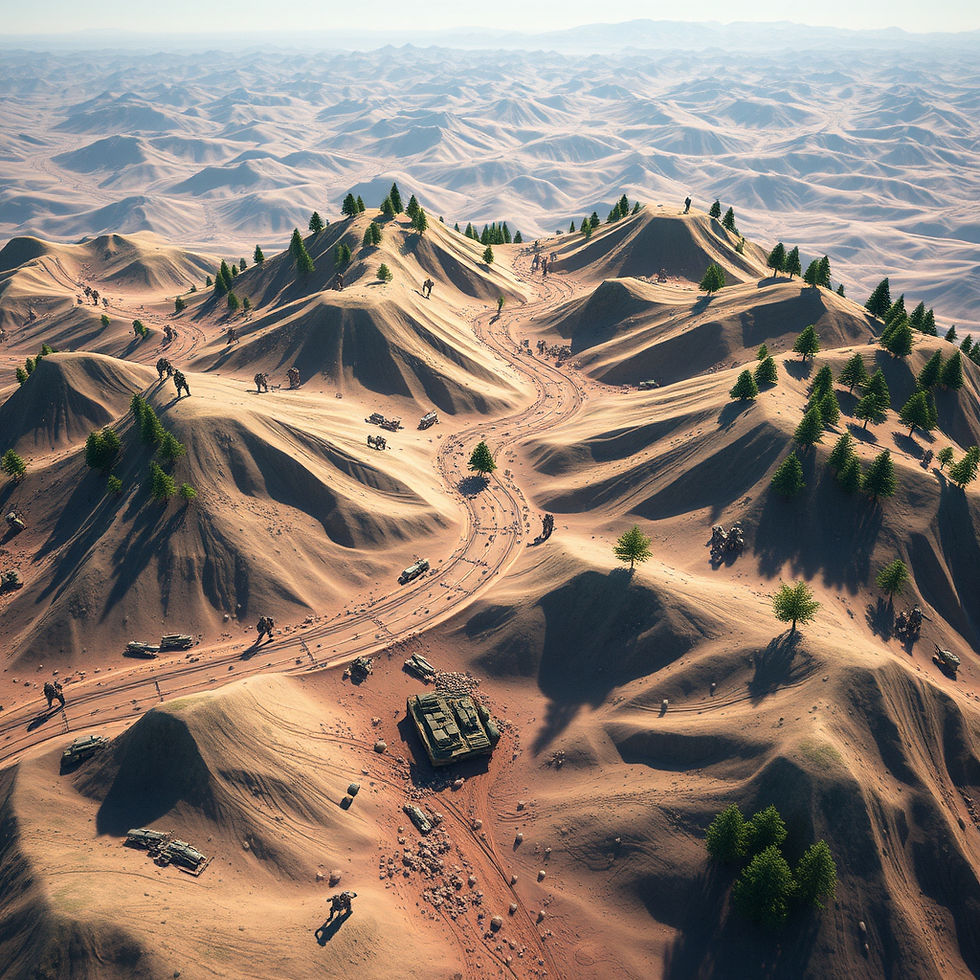How to Choose the Right 3D Partner for Your Simulation Project
- Geniuscrate

- Jul 15
- 3 min read

A successful simulation project depends on more than just a great idea or a capable engine, it requires the right 3D content partner. Whether you’re building a training tool for healthcare, defense, industrial operations, or education, the quality and accuracy of your 3D environments and assets directly impact user engagement, performance, and retention.
But with so many studios and freelancers claiming to specialize in 3D design, how do you choose the right one?
At GeniusCrate, we’ve partnered with simulation teams across industries to create scalable, real-time-ready 3D content. Here’s a breakdown of what to look for, and how we help you make the right choice.
1. Industry Experience and Simulation Focus
Not every 3D studio understands simulation. A great game artist might deliver visually appealing work, but training simulations require a different mindset: functionality, realism, and performance come first.
When evaluating a 3D partner, ask:
Have they worked on simulation-specific projects before?
Do they understand training goals, interaction design, and user behavior?
Can they design content that supports instructional outcomes and not just visuals?
At GeniusCrate, simulation is our core focus not a side offering. We build purpose-driven assets that enhance learning, not distract from it.
2. Engine Compatibility (Unreal, Unity, Custom)
It’s not just about building 3D models, but it’s about delivering them in a format that works with your simulation platform.
A good 3D partner should:
Understand your engine of choice (Unity, Unreal Engine, or proprietary tools)
Deliver optimized, clean assets that integrate smoothly
Provide correct scaling, naming conventions, and materials for your pipeline
Support VR, AR, desktop, or mobile targets as needed
GeniusCrate delivers engine-ready content: from textures and shaders to rigging and animation, all optimized for real-time performance across all major platforms.
3. Realism and Accuracy
For most simulation use cases, realism isn’t optional, but it’s essential. This includes:
Real-world scale and measurements
Photorealistic textures and lighting
Authentic props, machinery, or architecture
Industry-compliant visual standards (especially in defense, aerospace, or medical)
Our team at GeniusCrate combines technical accuracy with visual polish, so your environments not only look real but support real learning and operational goals.
4. Communication and Collaboration
Your 3D partner should feel like a part of your team, not as a disconnected vendor. Look for someone who:
Communicates regularly and transparently
Asks clarifying questions about goals, context, and user behavior
Works with your feedback, not against it
Provides early previews and wireframes before final delivery
At GeniusCrate, we offer collaborative workflows with simulation developers, SMEs, and instructional designers, helping to ensure every asset supports your larger project vision.
5. Scalability and Timeline Management
Simulation projects often grow in scope or require future updates. Your 3D content partner should:
Be able to scale up production when needed
Have a consistent pipeline for asset delivery
Be comfortable with deadlines, milestone reviews, and version control
Deliver content in modular, reusable formats
GeniusCrate offers structured delivery plans and long-term support for evolving simulations, whether you’re starting small or deploying globally.
6. Customization vs. Stock Content
Beware of studios offering cookie-cutter templates or “reused” content. True simulation effectiveness comes from custom-built environments and scenarios that reflect your workflows, users, and learning needs.
We never use generic shortcuts. GeniusCrate builds from the ground up, delivering content
that reflects your brand, your learners, and your training environment.
7. Post-Delivery Support
Even the best assets sometimes need tweaking. A professional partner provides:
Format conversions (e.g., changing engines or updating shaders)
Asset fixes or updates for new platform versions
Future-proof content that can evolve with your needs
GeniusCrate provides ongoing support, so your content remains usable, up-to-date, and effective, a long time after initial delivery.
GeniusCrate: Your Trusted 3D Partner for Simulation Projects
We’ve supported simulation teams in:
Defense and aerospace (mission training, terrain modeling)
Healthcare (surgical simulations, diagnostics training)
Industrial and construction (equipment training, safety drills)
Education and onboarding (scenario-based learning, gamified simulations)
With every project, we provide:
Hyper-realistic 3D environments and props
Engine-ready delivery for Unity, Unreal, or custom platforms
Optimized models for VR, AR, mobile, and desktop
On-time delivery with clear communication and long-term value
Let’s build smarter, faster, more effective training simulations: together.



Comments